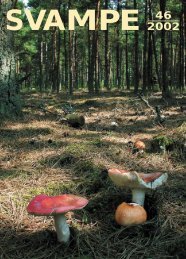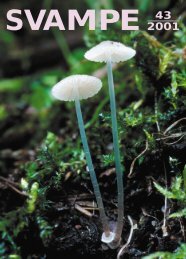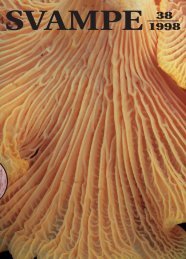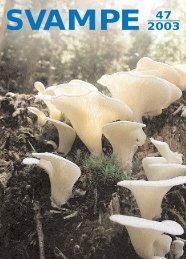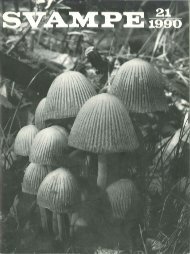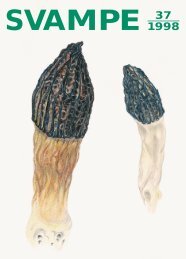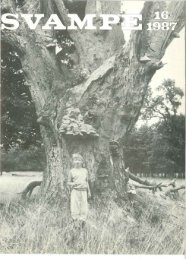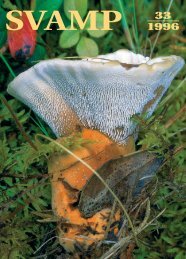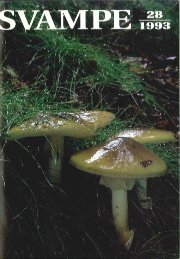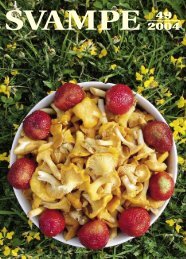You also want an ePaper? Increase the reach of your titles
YUMPU automatically turns print PDFs into web optimized ePapers that Google loves.
-15 -<br />
Fig. 4. Psalliota B ernardii.<br />
To the lef't an old very squamose fruit body.<br />
licIe and the underlying flesh very soon breaking up into large,<br />
more rarely small, thick, areolate scales between which the slightly<br />
lighter-coloured flesh is visible, or forming imbricate, coarse seaIes ;<br />
the margin abruptly incurved at first, so closely and broadly that<br />
it adjoins the apex of the stem; when expanding a felty, soft, thick<br />
roll is formed, striate on the underside (outer side), which far<br />
exceeds the gills, and from the downward-turned underside of which<br />
the ring is torn off. G i Il s free, crowded, very narrow, paIe greyish<br />
flesh colour ("Light Greyish Vinaceous"), at length blackish brown,<br />
edge sterile, light, floccose. S t e m short, 5-7 cm X 25-40 mm ,<br />
often subfusiform, sometimes cylindrical with pointed base, solid,<br />
whitish, the base often shot with purplish grey or brown, silky,<br />
firm, smooth and unstriped above, but the lower half of the stem<br />
as a rule with an ochraceous scaly zone or (rarely) a rudimentary,<br />
membranaceous, erect lower ring, slighter than the lower ring in<br />
P. edulis. Placed near the apex is seen a peronate white, fairly thin,




